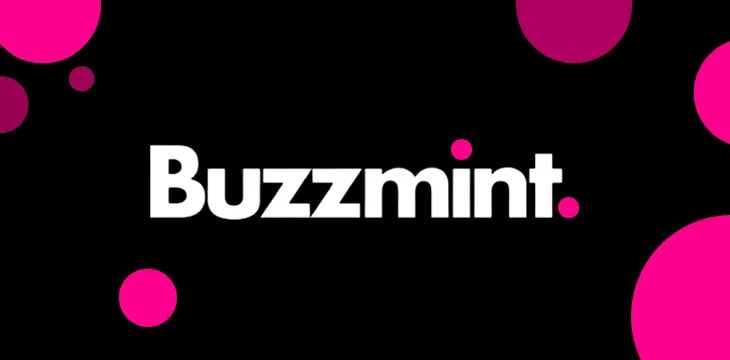|
Getting your Trinity Audio player ready...
|
Ayre Ventures has thrown its financial support behind Buzzmint to further the development of utility-focused non-fungible token (NFT) projects.
Ayre Ventures, the venture capital division of Calvin Ayre’s Ayre Group, recently participated in a seed funding round for Buzzmint, the U.K.-based Software as a Service (SaaS) platform that allows brands, creators, media-specific businesses and individuals to simply and quickly ideate, create and deploy utility-led NFT/token projects.
Buzzmint, which participated in the initial cohort of the Satoshi Block Dojo incubator program, was formed after co-founder Charles Symons went to a Dojo event at the invitation of his friend, Dojo co-founder Craig Massey. While at this event, Symons unknowingly bumped up against none other than Dr. Craig Wright, with whom Symons proceeded to have a brief but illuminating conversation.
Just prior to his Dojo visit, Symons, a decades-long veteran of the media and publishing sectors, had a meeting with a newspaper editor who painted a sorry picture of the financial challenges facing the press. After his conversation with Wright and some independent investigation into the possibilities of the Bitcoin SV (BSV) blockchain—including the fact that its unbounded scalability means it can permanently store NFTs on-chain rather than on a third-party server—Symons believed he’d found the solution to the editor’s dilemma.
Symons had gone to the Dojo event with another publishing/media veteran, Neil Ferguson, who like Symons was something of a blockchain neophyte at the time. The pair described their BSV learning experience as “a light bulb moment, the future for everyone that we’ve worked for.” At that moment, the seeds of Buzzmint took root.
Purpose driven
Both Symons and Ferguson can’t speak highly enough about their Dojo experience, particularly its mentor program, members of which the Buzzmint team are still in contact with today. Ferguson said these mentors helped expand Buzzmint’s reach beyond its principals’ familiar horizons of press and media. “A lot of the mentors liked what we were doing, so we had a lot of really good introductions to people in luxury fashion and the sports world.”
That said, introductions aren’t much use if you can’t effectively communicate your message once you’re in the room. Ferguson believes that “because of our background and the consultancy side, we’re able to really speak to these brands, not going in there like young guns and using all the buzzwords. We could really link it back to how the utility will help them, not to quickly make a buck but a long-term legacy play for their brands.”
Buzzmint is having discussions with a couple ‘Tier 1’ sports brands that have vaults loaded with legacy content—TV/press coverage, training videos, etc.—that Symons says “they’re doing absolutely nothing with.” But beyond simply cashing in these assets for a quick return, Symons believes the opportunity is there for these brands “to create new meaningful connections with their community, to bring that community into one place.”
Buzzmint has a vision for utility-based NFTs—in truth, Symons prefers ‘purpose driven’ to ‘utility’—that transcends the prevailing narrative of flipping monkey JPEGs. “We’re interested in actually proper good tokenization, NFT strategies for business that actually have some bloody meaning to it. There are enough companies operating in this space who are just in it for a quick buck.”
Symons believes the functionality of NFTs is “only limited by your imagination.” Symons cites a “country sports” company they’re currently talking to that runs “three or four massive events” per year that would benefit from issuing NFT tickets to these events. Symons says the community this company serves are “fanatical collectors of very high-ticket items” so there’s the opportunity for creating “certificates of ownership, which is a natural fit with the usefulness of blockchain.” Further down the line, there could even be an opportunity to explore “fractionalization of event horses.”
To illustrate these possibilities, there’s the Buzzmint Academy, which aims to demystify NFTs by explaining the technology in layman’s terms. Ferguson says this kind of education allows Buzzmint to “talk people through different stages, then we let them have the lightbulb moment, thinking ‘oh, so I can use that old front cover and that can unlock a subscription.’ We’re helping them get from where the brand is now to how it can function in the future.”
If you build it…
Buzzmint built its platform with the help of Elas, the Australian digital token solutions firm that helps businesses migrate onto BSV blockchain infrastructure. Ferguson said Elas came highly recommended by people at the Dojo. “We had the vision in our head in terms of the UX but Elas had the technical ability so they were a great fit.”
Ferguson says Buzzmint’s white label platform was designed to plug directly into a client’s existing digital infrastructure in order to put end users at ease. “To the end customer, it will feel like that normal brand experience, not being pushed to a third party. For those not blockchain-savvy, they’re in that walled garden that they trust. We’re looking at simplifying all the tools and terminology so it feels like a normal transaction, no mention of blockchain.”
Symons said “frictionless” was the ultimate goal. “We want the experience of coming on to Buzzmint to be literally plug-and-play. You don’t need a PhD in cryptology to use Buzzmint. A lot of competitors say ‘we want to make it easy for your grandmother to create an NFT’ but it never is, it’s all just words. Buzzmint isn’t just words, because we’ve seen it, we’ve built it.”
For entities or individuals that lack their own infrastructure—like the “very famous celebrity in the UK” Buzzmint is talking with—the company is building its own NFT marketplace (with help from Elas). This marketplace is set to make its debut by the end of Q3, although Buzzmint doesn’t intend to “go hard” in promoting it until Q4. There are always last-minute tweaks to be made and, with all the competition in the current NFT marketplace, Ferguson says “we want to set our stall out right.”
No matter how good the platform, all NFT-focused operators face challenges due to the negative publicity generated by what Symons called “the crypto crappy asset-flipping artworld.” Symons has friends with their own business interests who want “nothing to do with NFTs or blockchain” as a result of this publicity, but if they allow Symons five minutes in which to counter this narrative, they inevitably become “massive converts.”
The fact that the formerly high-flying NFT market has since crashed back to reality “gives us the opportunity to go out and do some proper education, as opposed to having to cut through the crap.” Symons likes to use the analogy of farmers burning grass to kill the weeds while preserving the foundation that allows you to start anew. “That’s an open door in my book, a chance to go and do some really good work.”
To learn more about Buzzmint, check out their offering at Buzzmint.io. To learn more about participating in future cohorts of the Satoshi Block Dojo, click here. For information on Elas Digital, click here.

 07-12-2025
07-12-2025 





